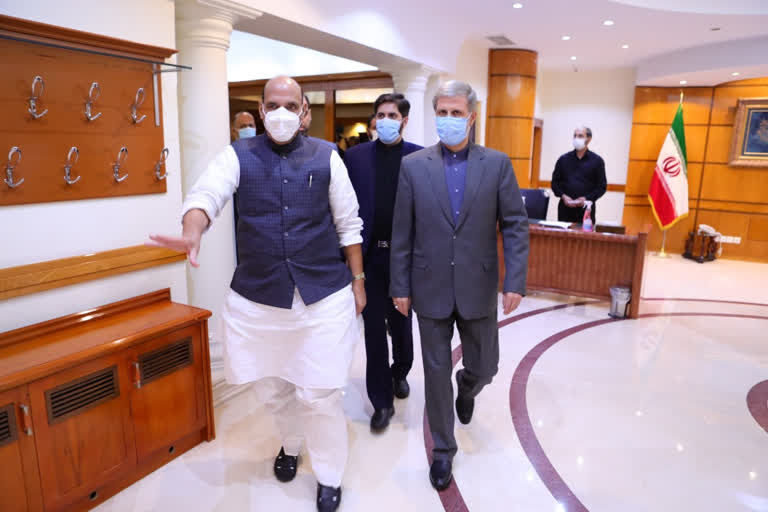New Delhi: It first came in as a purported rumour. But the announcement was abrupt. That Defence Minister Rajnath Singh may make a transit halt in Tehran on Saturday and meet Iran’s defence minister Brigadier-General Amir Hatami.
Singh was returning that day from his trip to Moscow where he had addressed the defence ministers of the Shanghai Cooperation Organization (SCO), the Commonwealth of Independent States (CIS) and the Collective Security Treaty Organization (CSTO).
Later, the defence minister tweeted that the discussion was on regional security issues including Afghanistan. But there was definitely much more to it given the scale and magnitude of possibilities.
The planning for the meeting may have been in the works for sometime or may have been sudden. But it is replete with significance.
Firstly, there is unprecedented warming of ties between Iran and China while India-China relations are at a nadir after a border row escalated into a scale now where about 1,00,000 troops are deployed along the Line of Actual Control (LAC) and in depth areas along with military equipment including air force assets.
One reason for the warming of Iran-China ties is because of US sanctions on Iran which China has decided to disregard. Obviously, China has the economic weight and geopolitical heft to defy US and is therefore buying oil that Iran is desperate to sell. On the other hand, India, once a leading buyer of Iranian oil, is adhering to the US diktat.
Traditionally Iran and India had cherished close ties with the Shia-majority country being a major backer of India in its geostrategic policies and especially in checking Sunni-majority countries like Pakistan.
India will be very keen to wedge in some distance between Iran and China especially in the backdrop of the fact that there are no immediate signs of ‘disengagement and de-escalation’ with China.
Secondly, Singh may have tried to see if the Chabahar port deal can be salvaged where India’s dithering had frustrated Iran. India has been very keen on building a transit corridor through Iran’s strategic Chabahar port that will enable trade access to Afghanistan, Central Asia and even to Russia.
India had long delayed the plan to build two terminals with five berths at Chabahar’s Shahid Beheshti area. The two terminals were a 600-metre cargo terminal and a 640-metre container terminal.
The US sanctions on Iran virtually ensured that India could not comply with the set targets for Chabahar’s construction while the vital Chabahar-Zahedan railway project was given out to China.
Thirdly, Iran is part of a new anti-US grouping in the Muslim world which also includes Turkey, Qatar and Malaysia. This is a group outside the pale of OIC (Organisation of Islamic Countries) that has come up against Saudi Arabia which is a close US supporter and also enjoys good ties with Israel—an anathema in the Islamic world.
There are also reasons to think that Pakistan believes Saudi Arabia has rebuffed its stand on Kashmir. So Pakistan may become a natural member of the Iran-Turkey-Malaysia-Qatar group.
Fourthly, with the delimitation process set to create problems again in Kashmir after the abrogation of Article 370 and changing domicile laws. With substantial Shia populations in many parts of Kashmir who look up to Iran for ideological guidance, India will be keen that Iran does not react against the delimitation process the way it virulently criticized the Article 370 abrogation.
That brings us to the inevitable question. Is India doing too little and too late in trying to bring back Iran to its fold like in the past?
Also Read: Rajnath Singh discusses bilateral ties, regional security with Iranian counterpart



